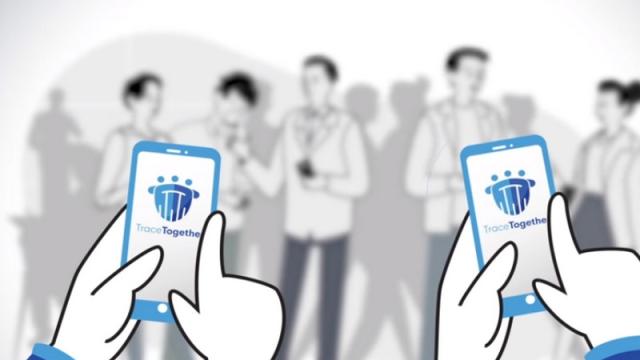On March 20 Singapore released a mobile app to help track the spread of novel coronavirus. Over 620,000 people signed up within a week, and the developers have been making an open source version ever since to help other countries develop their own versions. Here’s how TraceTogether actually works.
What is TraceTogether?
TraceTogether is an app used in Singapore to track and trace people who may have come into contact with a confirmed COVID-19 case.
It was built over two months by BlueTrace using both centralised and decentralised contact tracing methods.
As of March 25, 620,000 people were reportedly using the app.
How TraceTogether works
The app sends signals between other phones that also have the software when they come into close proximity of one another. It can tell how close two people were and for how long, and this data is stored on the device for three weeks.
[referenced url=”https://gizmodo.com.au/2020/03/coronavirus-tech-surveillance-australia/” thumb=”https://gizmodo.com.au/wp-content/uploads/2020/03/coronavirus-surveillance-australia-410×231.jpg” title=”How Australia’s Coronavirus Tech Compares With Other Countries” excerpt=”It’s been a disorientating week for Australia. Hundreds of thousands of people lost their jobs. New restrictions are introduced daily, often late at night where people can easily miss them. The government advocates for social distancing and staying at home, yet insist schools are still safe. And with millions of Australians (the fortunate ones) working from home, our tech infrastructure is strained. We’re not really thinking about how tech can be used to help flatten the curve when government websites don’t work, telcos are struggling and Netflix slashed its bitrate to help fight speed issues. But some countries are doing better than others.”]
TraceTogether’s Privacy
In Singapore the TraceTogether app is completely voluntary and users give consent for the app to run bluetooth. They also need to provide a phone number for verification before being given a user ID.
However, according to CNBC, if someone contracts COVID-19 they are obliged by law to help to provide the Ministry of Health (MOH) with a timeline of their movements. This includes app data.
TraceTogether does not log regular location data, a user’s name and it can’t access an contact lists. If contact tracers for the MOH request a user’s bluetooth-acquired data, it will be sent as an encrypted log with a temporary ID to preserve privacy.
“The collection and logging of encounter/proximity data between devices that implement BlueTrace is done in a peer-to-peer, decentralised fashion, to preserve privacy,” says the BlueTrace Manifesto.
“At the same time, the analysis and the provision of epidemic control guidance is done centrally by a trusted public health authority, committed to driving adoption. Sovereignty is respected through a federated model among a network of participating countries and public health authorities.”
Will other countries get TraceTogether?
While TraceTogether was specifically built for Singapore, the app developers are currently working to make the source codes protocols open-sourced so other countries can create their own versions.
There’s been no solid word on whether Australia would do it (although South Australia already tracked one couple via mobile) but the United Kingdom was in talks about a coronavirus tracing app earlier this month.
